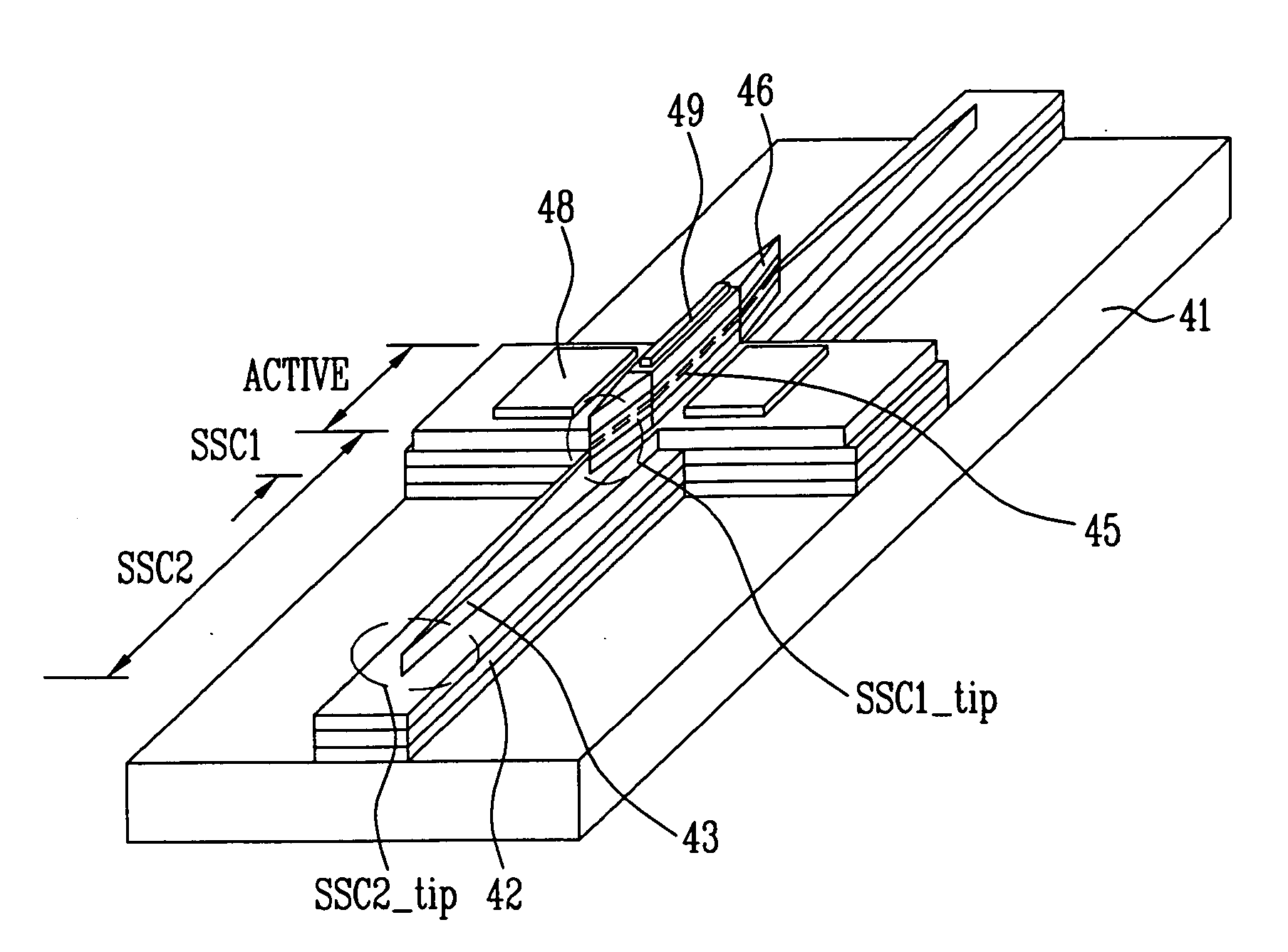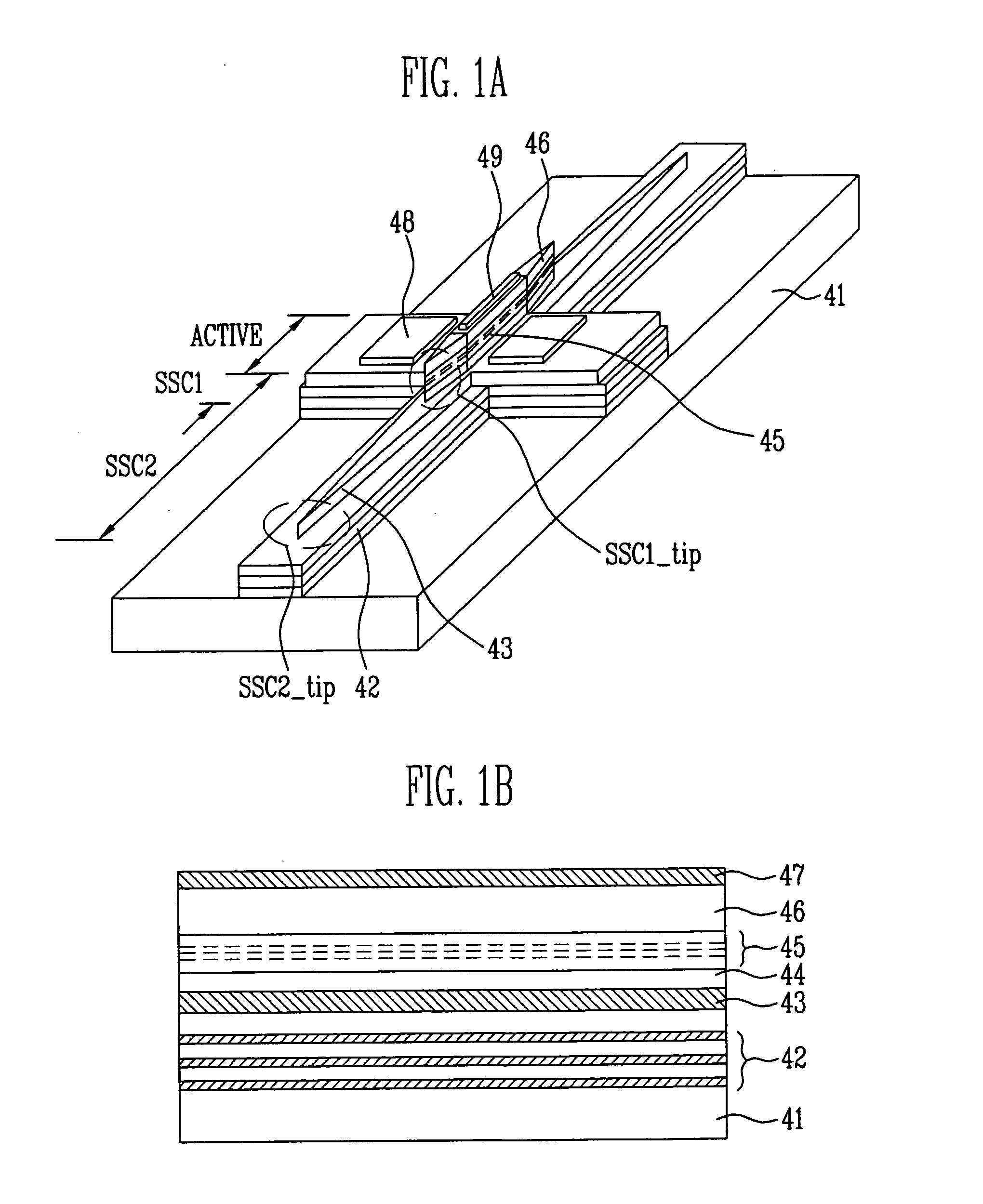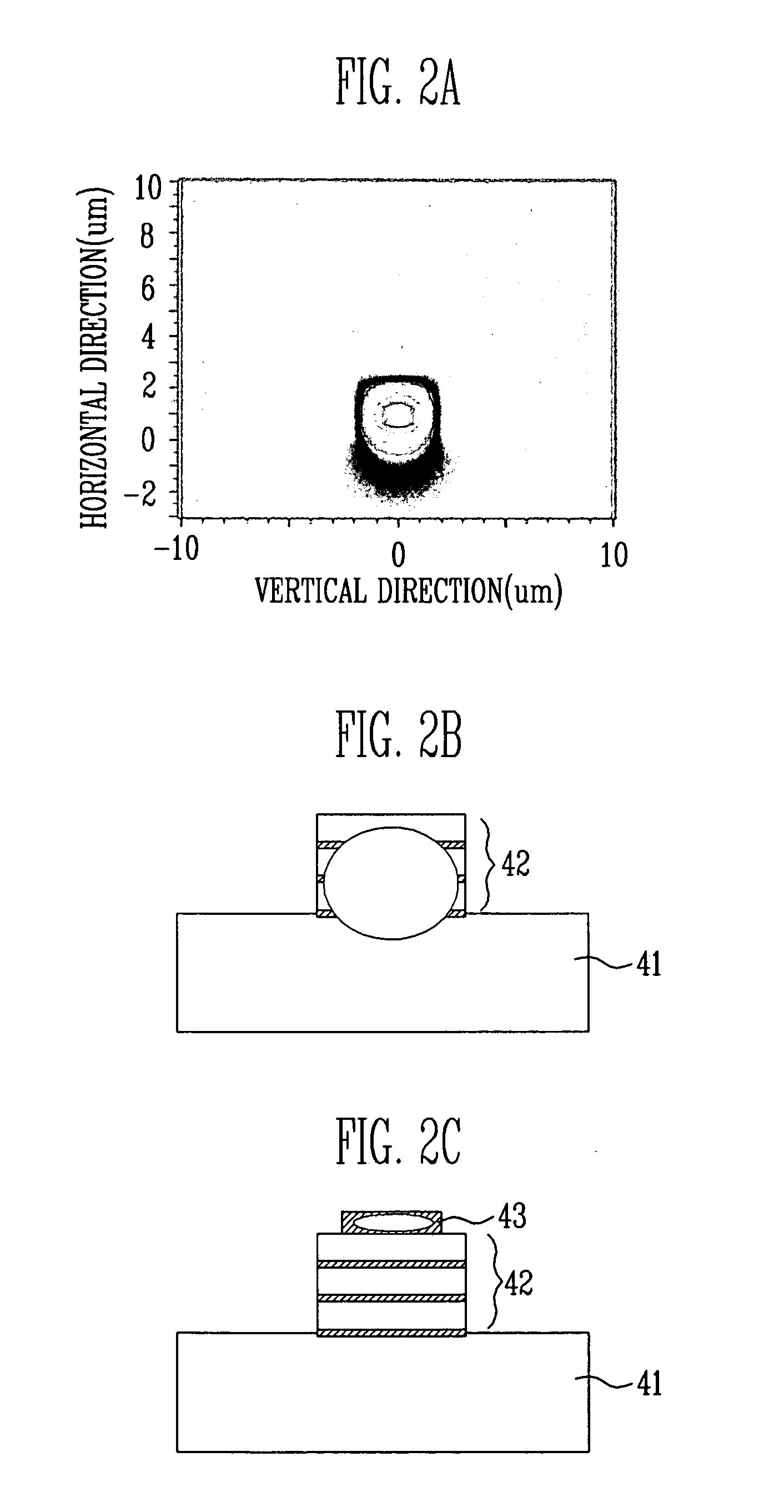Electroabsorption modulator and method of manufacturing the same
a technology of electroabsorption modulator and manufacturing method, which is applied in the direction of instruments, non-linear optics, optical elements, etc., can solve the problems of limiting the speed of the electroabsorption modulator that maintains a certain extinction ratio, the slope of the transfer function should be steep, and the need for optical modulators, etc., to achieve low optical coupling loss and high input optical power
- Summary
- Abstract
- Description
- Claims
- Application Information
AI Technical Summary
Benefits of technology
Problems solved by technology
Method used
Image
Examples
Embodiment Construction
[0035] The present invention will now be described more fully hereinafter with reference to FIGS. 1 to 6, in which preferred embodiments of the invention are shown. This invention may, however, be embodied in different forms and should not be construed as limited to the embodiments set forth herein. Rather, these embodiments are provided so that this disclosure will be thorough and complete, and will fully convey the scope of the invention to those skilled in the art.
[0036] (Electroabsorption Modulator)
[0037]FIG. 1A is a perspective view of an spot size converter integrated electroabsorption modulator according to an embodiment of the present invention, and FIG. 1B is a schematic cross-sectional view of FIG. 1A.
[0038] Referring to FIG. 1A, a double waveguide electroabsorption modulator includes first and second optical waveguides 45 and 42, and first and second spot size converters SSC1 and SSC2 located therebetween for changing and moving an optical mode. An optical confinement ...
PUM
 Login to View More
Login to View More Abstract
Description
Claims
Application Information
 Login to View More
Login to View More - R&D
- Intellectual Property
- Life Sciences
- Materials
- Tech Scout
- Unparalleled Data Quality
- Higher Quality Content
- 60% Fewer Hallucinations
Browse by: Latest US Patents, China's latest patents, Technical Efficacy Thesaurus, Application Domain, Technology Topic, Popular Technical Reports.
© 2025 PatSnap. All rights reserved.Legal|Privacy policy|Modern Slavery Act Transparency Statement|Sitemap|About US| Contact US: help@patsnap.com



